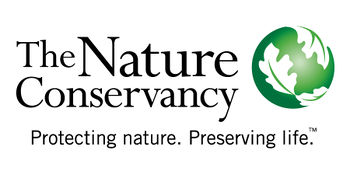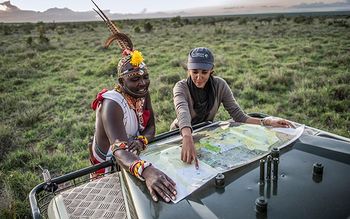The Nature Conservancy (TNC)


Summaries of Environmental Topics on the Central Coast of California created by the ENVS 560/L Watershed Systems class at CSUMB.
Background
The TNC is a non-profit organization founded in 1951 and since then grew more than 1 million members while conserving more than 119 million acres of land, and operating more than 100 marine conservation projects. The agency works in 72 countries around the world.[1] The TNC's mission is to ensure that people can thrive without destroying the resources we depend on.[2] The TNC strives for healthy landscapes to improve livelihoods, create rural jobs, improve food and water security, protect habitats, and reduce the risk of climate change. This is achieved by communicating and partnering with the community, using science to improve mitigation practices, and influencing policy.[3] The TNC protects water by reforestation and improving farming practices[4], and preserves natural habitats to protect the coasts and quantifies the ocean's resources.[5] Strategies are developed to ensure healthier quality of life for people in cities, improved habitat for wildlife, and that people have access to quality green space. [6] To combat the effects of climate change, the TNC is developing practical and cost-effective solutions around the world to help people slow the rate of climate change and deal with its impacts.[7]
Central Coast areas that TNC has protected[8]:
- Andrew Molera State Park [9]
- Carrizo Plain National Monument [10]
- Elkhorn Slough Reserve [11]
Central Coast Projects
Guadalupe–Nipomo Dunes Project
Guadalupe–Nipomo Dunes is the largest intact coastal dune ecosystem on Earth located between Pismo State Beach to Point Sal in centeral California. This 18-mile long dune now belongs to the U.S. Fish and Wildlife Service, Santa Barbara County, the Land Conservancy of San Luis Obispo County, a number of private parties, and the California State Department of Parks and Recreation and is open to the public.[12]
Monterey County Project
TNC combines land protection and community-based conservation as well as a sustained effort to introduce good conservation principles into public policy and land-use planning. TNC's future goals are to purchase and acquire conservation easements on key lands in highly threatened, biologically rich conservation areas.
- Marine Projects
- Monterey County Project
- Mount Hamilton Project
- San Luis Obispo County Project
- Sequoia Foothills Project
Links
More information about TNC California can be found on their website.
References
- ↑ https://www.nature.org/about-us/index.htm?intc=nature.tnav.about
- ↑ https://www.nature.org/ourinitiatives/index.htm?intc=nature.tnav.ourwork
- ↑ https://www.nature.org/ourinitiatives/urgentissues/land-conservation/howwework/index.htm?intc3=nature.lands.lp.splash1
- ↑ https://www.nature.org/ourinitiatives/urgentissues/water/enough-water-for-all/index.htm?intc3=nature.water.lp.r1c2
- ↑ https://www.nature.org/ourinitiatives/urgentissues/oceans/understanding-ocean-benefits/index.htm?intc3=nature.oceans.lp.r1c3
- ↑ https://www.nature.org/ourinitiatives/urgentissues/nature-in-cities/index.htm
- ↑ https://www.nature.org/ourinitiatives/urgentissues/global-warming-climate-change/innovate-and-share-science/index.htm?intc3=nature.climate.lp.r1c1
- ↑ Natural Conservancy - Places we Protect in California
- ↑ TNC - Andrew Molera State Park History
- ↑ TNC - Carrizo Plain National Monument
- ↑ TNC - Elkhorn Slough Reserve
- ↑ https://www.nature.org/ourinitiatives/regions/northamerica/unitedstates/california/placesweprotect/guadalupe-nipomo-dunes.xml
Disclaimer
This page may contain student work completed as part of assigned coursework. It may not be accurate. It does not necessary reflect the opinion or policy of CSUMB, its staff, or students.